Tamil Nadu
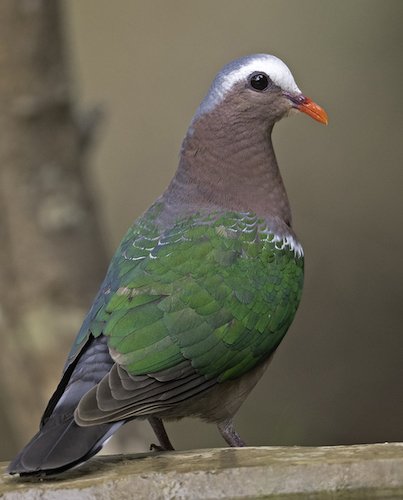
Tamil Nadu is the southernmost state of India. The tenth largest Indian state by area covering 130,058 km2 (50,216 square miles) and the sixth largest by population with over 77 million. Tt is the home of the Tamil people, who speak the Tamil language – the state’s official language and one of the longest surviving classical languages of the world. The capital and largest city, with over 12 million inhabitants, is Chennai. Located on the south-eastern coast of the Indian peninsula, Tamil Nadu is straddled by the Western Ghats and Deccan Plateau in the west, the Eastern Ghats in the north, the Eastern Coastal Plains lining the Bay of Bengal in the east, the Gulf of Mannar and the Palk Strait to the south-east, the Laccadive Sea at the southern cape of the peninsula, with the river Kaveri bisecting the state. Politically, Tamil Nadu is bound by the Indian states of Kerala, Karnataka, and Andhra Pradesh, and encloses a part of the union territory of Puducherry. It shares an international maritime border with the Northern Province of Sri Lanka at Pamban Island.
Tamil Nadu is also one of the most industrialised states, with the manufacturing sector accounting for nearly one-third of the state’s GDP. With its diverse culture and architecture, long coastline, forests and mountains, Tamil Nadu is home to a number of ancient relics, historic buildings, religious sites, beaches, hill stations, forts, waterfalls and four World Heritage Sites. The state’s tourism industry is the largest among the Indian states. The state has three biosphere reserves, mangrove forests, five National Parks, 18 wildlife sanctuaries and 17 bird sanctuaries.

Western Ghats – ©Magentic Manifestations CC BY-SA 3.0 via Wikimedia Commons
The Western Ghats run south along the western boundary with the highest peak at Doddabetta (8,648 feet) in the Nilgiri Hills. The Eastern Ghats run parallel to the Bay of Bengal along the eastern coast and the strip of land between them forms the Coromandel region. They are a discontinuous range of mountains intersected by Kaveri River. Both mountain ranges meet at the Nilgiri mountains which run in a crescent approximately along the borders of Tamil Nadu with northern Kerala and Karnataka, extending to the relatively low-lying hills of the Eastern Ghats on the western portion of the Tamil Nadu–Andhra Pradesh border. The Deccan plateau is the elevated region bound by the mountain ranges and the plateau slopes gently from west to east resulting in major rivers arising in the Western Ghats and flowing east into the Bay of Bengal. The coastline of Tamil Nadu is 1,076 km (669 miles) long, and is the second longest state coastline in the country after Gujarat.
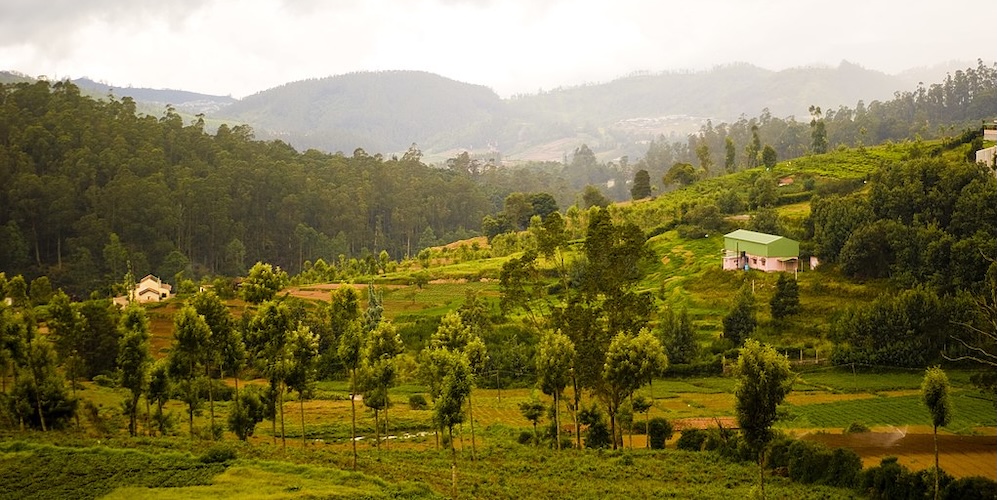
Nilgiri Hills – ©Valli Ravindran CC BY 2.0 via Wikimedia Commons
The region has a tropical climate and depends on monsoons for rainfall. A tropical wet and dry climate prevails over most of the inland peninsular region except for a semi-arid rain shadow east of the Western Ghats. Winter and early summer are long dry periods with temperatures averaging above 18 °C; summer is exceedingly hot with temperatures in low-lying areas exceeding 50 °C; and the rainy season lasts from June to September, with annual rainfall averaging between 30 and 60 inches across the region. Once the dry northeast monsoon begins in September, most precipitation in India falls in Tamil Nadu, leaving other states comparatively dry. A hot semi-arid climate predominates in the land east of the Western Ghats which includes inland south and south-central parts of the state and gets between 15 and 30 inches of rain, with hot summers and dry winters with temperatures around 20–24 °C. The months between March and May are hot and dry, with mean monthly temperatures hovering around 32 °C, with 13 inches of precipitation. Without artificial irrigation, this region is not suitable for agriculture.
The southwest monsoon from June to September accounts for most of the rainfall in the west of the region. The Arabian Sea branch of the southwest monsoon hits the Western Ghats from Kerala and moves northward along the Konkan coast, with precipitation on the western region of the state. The lofty Western Ghats prevent the winds from reaching the Deccan Plateau; hence, the leeward region (the region deprived of winds) receives very little rainfall. The Bay of Bengal branch of the southwest monsoon heads toward northeast India, picking up moisture from the Bay of Bengal. The Coramandel coast does not receive much rainfall from the southwest monsoon, due to the shape of the land. The northern and eastern parts of Tamil Nadu receive most of their rains from the northeast monsoon, which takes place from November to early March. The North Indian Ocean tropical cyclones occur throughout the year in the Bay of Bengal and the Arabian Sea, bringing devastating winds and heavy rainfall. The annual rainfall of the state is about 37 inches of which 48 per cent is through the northeast monsoon, and 52 per cent through the southwest monsoon. The state has only 3% of the water resources nationally and is entirely dependent on rains for recharging its water resources. Monsoon failures lead to acute water scarcity and severe drought.
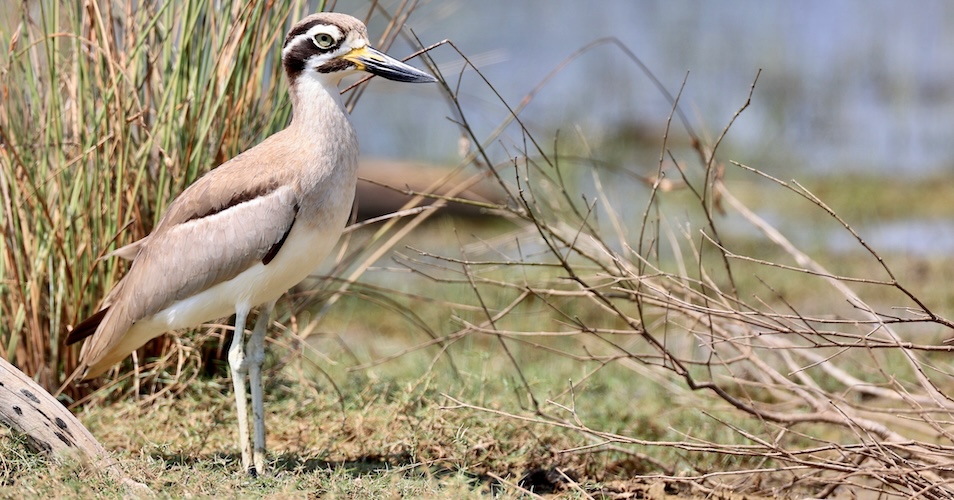
Great Thick-knee Esacus recurvirostris – ©Bird-Photo-Tours ASIA
Forests occupy an area of 22,643 km2 (8,743 square miles) constituting c.17% of the state. There is a wide diversity of plants and animals resulting from its varied climates and geography. Deciduous forests are found along the Western Ghats while tropical dry forests and scrub lands are common in the interior. The southern Western Ghats have rain forests located at high altitudes called the South Western Ghats montane rain forests. The Western Ghats eco-region is one of the eight hottest biodiversity hotspots in the world and a UNESCO World Heritage Site. Important ecological regions of Tamil Nadu are the Nilgiri Biosphere Reserve in the Nilgiri Hills, the Agasthyamala Biosphere Reserve in the Agastya Mala-Cardamom Hills and Gulf of Mannar coral reefs. The Gulf of Mannar Biosphere Reserve covers an area of 10,500 km2 (4,100 square miles) of ocean, islands and the adjoining coastline including coral reefs, salt marshes and mangroves. It is home to endangered aquatic species.
Birding Tamil Nadu
Bird sanctuaries, including Thattekad, Kadalundi, Vedanthangal, Ranganathittu, Kumarakom, Neelapattu, and Pulicat, protect numerous migratory and local birds. Protected areas cover an area of 3,305 km2 (1,276 square miles), constituting 2.5% of the state and 15% of the forested area. Vedanthangal Bird Sanctuary, established in 1936, was India’s first wildlife sanctuary. The protected areas are administered by the Ministry of Environment and Forests of the government of India and the Tamil Nadu Forest Department. Pichavaram consists of a number of islands interspersing the Vellar estuary in the north and Coleroon estuary in the south with mangrove forests. The Pichavaram mangrove forests is one of the largest mangrove forests in India covering 45 km2 (17 square miles) and supports the existence of rare varieties of economically important fish as well as migrant birds.
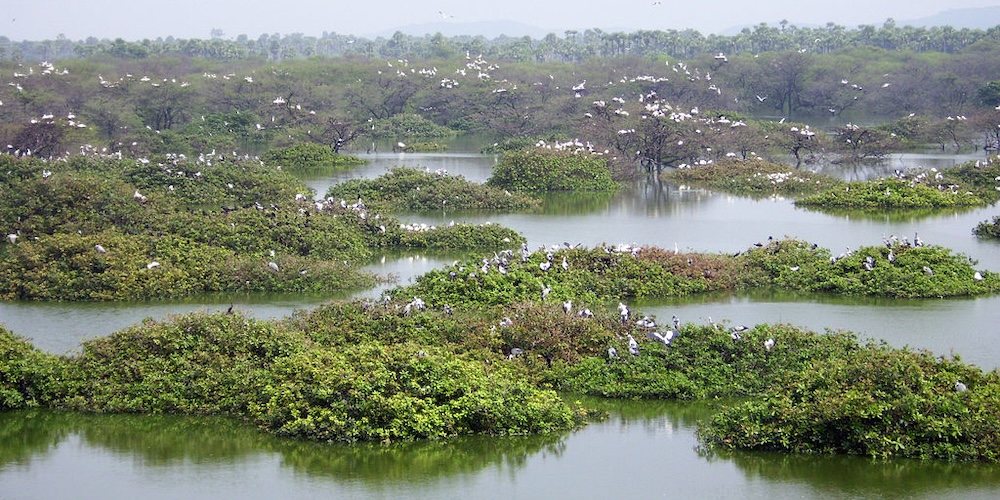
Vedanthangal Lake Bird Sanctuary – ©Phoenix bangalore, Public Domain, via Wikimedia Commons
The state has five National Parks covering 307.84 km2 (118.86 square miles). These are: Anamalai, Mudumalai, Mukurthi, Gulf of Mannar, a marine national park and Guindy, an urban national park within Chennai. Tamil Nadu has 18 wildlife sanctuaries. It is home to one of the largest populations of endangered Bengal tigers and Indian elephants in India. There are five declared elephant sanctuaries and Tamil Nadu participates in Project Tiger and has five declared tiger reserves at Anamalai, Kalakkad-Mundanthurai, Mudumalai, Sathyamangalam and Megamalai. There are seventeen declared bird sanctuaries. Threatened and endangered species found in the region include the grizzled giant squirrel.
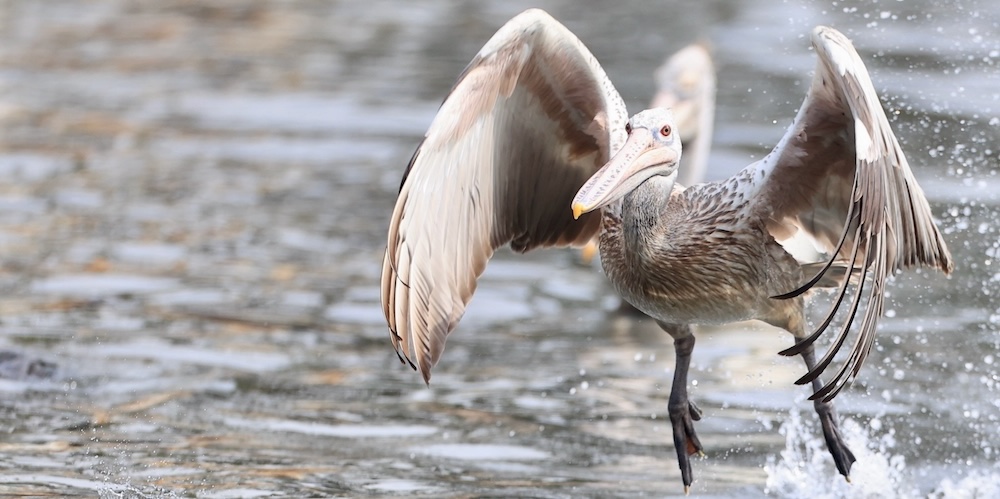
Spot-billed Pelican Pelecanus philippensis – ©Bird-Photo-Tours ASIA
Protected areas provide safe habitat for both resident and migratory birds such as cormorants, darters, herons, egrets, open-billed storks, spoonbills and ibises, grebes, stilts, a few migratory ducks and occasionally pelicans. Marine species also benefit, such as the dugongs, turtles, dolphins and a wide variety of fish and insects.
Tamil Nadu has a wide range of Biomes extending east from the South Western Ghats montane rain forests in the Western Ghats through the South Deccan Plateau dry deciduous forests and Deccan thorn scrub forests to tropical dry broadleaf forests and then to the beaches, estuaries, salt marshes, mangroves, Seagrasses and coral reefs of the Bay of Bengal. Subsequently, the state has a range of flora and fauna with many species and habitats.
-
Number of bird species: 599
(As at July 2025)State Bird: Emerald Dove Chalcophaps indica
-
Avibase
PDF ChecklistThis checklist includes all bird species found in Tamil Nadu , based on the best information available at this time. It is based on a wide variety of sources that I collated over many years. I am pleased to offer these checklists as a service to birdwatchers. If you find any error, please do not hesitate to report them. -
E-Bird
PDF ChecklistThis checklist is generated with data from eBird (ebird.org), a global database of bird sightings from birders like you. If you enjoy this checklist, please consider contributing your sightings to eBird. It is 100% free to take part, and your observations will help support birders, researchers, and conservationists worldwide.
-
Birds of the Indian Subcontinent
| By Richard Grimmett, Carol Inskipp & Tim Inskipp | Helm | 2025 | Edition 2 | Paperback | 544 pages, 240+ plates with colour illustrations; colour distribution maps, b/w illustrations | ISBN: 9781472984777 Buy this book from NHBS.com -
Wetland Birds of Tamil Nadu
| (A Pictorial Field Guide) | By Robert B Grubh & Shailaja R Grubh | Institute for Restoration of Natural Environment | 2012 | Hardback | 168 pages, 235 colour photos, colour maps | ISBN: 9788192014005 Buy this book from NHBS.com
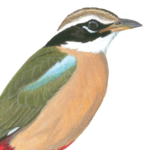
Birds of the Indian Subcontinent
Apple iOS | AndroidThe eGuide to Birds of the Indian Subcontinent is an interactive companion to Birds of the Indian Subcontinent – the definitive guide for birdwatchers visiting the region. It covers India, Pakistan, Nepal, Bhutan, Bangladesh, Sri Lanka and the Maldives. This application has specific features that will enhance your birding experience.
Indian Birds
Apple iOS | AndroidPioneers in bringing Indian Birding to the smart phone generation - Introducing Indian Birds, the time-honoured and cherished birding companion for India. Established in 2010, it proudly remains the sole mobile app available on App Store, offering bird enthusiasts the ability to explore bird namesOrganisations-
Advanced Institute for Wildlife Conservation
WebsiteEstablished in October 2017, Advanced Institute for Wildlife Conservation (AIWC) is one of its kind research institution set up by the forest department of Tamil Nadu primarily to provide scientific solutions to conservation problems -
Coimbatore Birding Club
Facebook PageAvian wing of Environment Conservation Group. -
Madras Naturalist's Society
WebsiteThe Madras Naturalists' Society (MNS) is a non profit organisation founded in 1978 by a group of nature lovers in the city of Madras. MNS promotes appreciation, education and conservation of Nature. Nature has heaped India with so much bounty. It is one of the world's biodiversity hotspots. But sadly, her natural treasures are being slowly destroyed by poorly enforced laws, a lack of vision and general apathy among her citizens. MNS's mission is to help spread awareness about India's rich natural heritage and help conserve it through its activities. -
Sálim Ali Centre for Ornithology and Natural History (SACON)
WebsiteIn addition to research on Indian birds, the Ornithology Division also conducts the International Conference on Indian Ornithology, hosted by SACON every four years -
Tamil Nadu Bird Watchers
Facebook PageTamil Nadu Bird Watchers and Tamil Nadu Birds
Reserves-
BR Gulf of Mannar Biosphere Reserve
InformationSatellite ViewEndowed with a combination of different ecosystems (mangroves, seagrasses and coral reefs); the Gulf of Mannar Biosphere Reserve (from here on referred to as the Reserve, supports over 3,600 species of plants and animals. The first of its kind in India, the Reserve encompasses a group of 21 small islands along the coast of the Gulf of Mannar in southern India… -
BS Chitrangudi
InformationSatellite ViewIt is notable as a nesting site for several migratory heron species that roost in the prominent growth of Babul trees there. -
BS Kanjirankulam
InformationSatellite ViewThe breeding population of migratory waterbirds arrive here between October and February and include: painted stork, white ibis, black ibis, little egret, great egret. -
BS Karaivetti
InformationSatellite ViewThe Karaivetti Bird Sanctuary is a 4.537-square-kilometre (1.752 sq mi) protected area located in the Ariyalur District of the state of Tamil Nadu, India. The sanctuary is about 25 kilometres (16 mi) from Thanjavur. This freshwater lake is fed by Pullambadi, Kattalal canal and attracts thousands of birds every year. -
BS Kunthakulam
InformationSatellite ViewKunthakulam bird sanctuary is situated 33-km south of Tirunelveli in Nanguneri taluk. Kunthakulam is a small and natural scenic village, which is covered with natural forests and ponds. During the season January to April every year more than 10 thousand birds from various countries like Pakistan, Myanmar, Sri Lanka, USA, Australia migrate here and when the season is over the birds return… -
BS Suchindram Theroor
InformationSatellite ViewThe Suchindram Theroor Birds Sanctuary is a protected area comprising the Suchindram Kulam wetlands at 8°7′30″N 77°27′30″E, and the Theroor Kulam wetlands at 8°10′45″N 77°27′45″E, both near Suchindram town in Kanyakumari District, Tamil Nadu state, South India. It is located between Nagercoil and Kanyakumari on the National Highway No. 47. Suchindram pond has a large variety of aquatic vegetation including water lilly, lotus, floating hearts, pistia and other water plants. A few tall trees and other bushes have formed an island at the centre, which gives refuge and is a resting place for birds. -
BS Udayamarthandapuram
InformationSatellite ViewThe Udayamarthandapuram Bird Sanctuary covers an area of around 45 km2 and is fed by an irrigation tank that receives water from the Mettur Dam. The tank remains dry between the months of April and August. From September through December, the bird population inhabiting the sanctuary rises to around 10,000 birds. The ideal season to visit this sanctuary is during the months of November and December. -
BS Vaduvoor
InformationSatellite ViewVaduvur Bird Sanctuary is a bird sanctuary located in the town of Vaduvur in Tiruvarur District in the Indian state of Tamil Nadu. Vaduvur was located 22 KM away from Thanjavur on the Thanjavur-Mannargudi state highway. 20,000 birds from 38 different species visit the sanctuary every year. They include Open bill stork, Cattle egret, Little egret, Pelicans, Grey Pelicans, Darter, Little Cormorants, Common coots, Little tern, Pond heron, Night heron, Painted stork, Common keat, Kingfisher among others. The ideal time to visit the sanctuary is in the early morning before 6.30 p.m or in the late evening after 05.30 p.m. However, a large group of bird can be seen throughout the day. -
BS Vedanthangal
InformationSatellite ViewOriginally established in 1798, the official sanctuary covers only 30 hectares of Marshy land on the edge of Lake Vendanthangal. Unofficially, the bird's breeding ground covers an area of about 10 square kilometers, with habitats, including woodland, marsh and open grass, as well as several other lakes. It is an extraordinarily crowded place, with more than 40,000 birds (including 26 rare species), from various parts of the world visit the sanctuary during the migratory season every year. -
BS Vellode
InformationSatellite ViewThe sanctuary is about 15 km from Erode Central Bus Terminus on the way to Chennimalai, near Vellode, and 10 km from Erode Junction Railway Station, in the south. It is at a large lake surrounded with semi-dark bushes, near Vellode. This .772 km2 (0.298 sq mi) sanctuary near Erode is home to many foreign birds. The sanctuary features thousands of birds coming from various countries, some of which can be easily identified. Some easily found bird species include cormorants, teals, pintail ducks, pelicans, and darters. -
BS Vettangudi
InformationSatellite ViewVettangudi Bird Sanctuary is a 0.384 km2 (0.148 sq mi) protected area, declared in June 1977 near Thirupattur in the Sivaganga District that includes the periya kollukudi patti, chinna kollukudi patti, and vettangudi patti irrigation tanks. -
BS WS Pulicat Lake
InformationSatellite ViewPulicat Lake Bird Sanctuary is a famous 481 km² located in Nellore district of Andhra Pradesh and Protected area in Thiruvallur District of Tamil Nadu state in South India. Pulicat Lake is the second largest brackish-water eco-system in India after Chilka lake in Orissa. The sanctuary is most noted for the many greater flamingos seen here. It also attracts many migratory birds and also is a feeding and nesting ground for aquatic and terrestrial birds such as pelicans,storks,etc. The biodiversity of this lake attracts hundreds of thousands of visitors per year. -
FR Nanmangalam
InformationSatellite ViewThe Coromandel coast once had extensive scrub forests which come under the classification of dry evergreen scrub consisting of many thorny plants, but less than 1% of the original forests remain due to population pressures (Meher Homji,1973). Such a type of habitat closest to Madras is the Guindy National Park, which occurs within city limits. However, this is a highly modified forest, many trees having been planted by the forest department over the years. A few other naturally occurring scrub forests around Madras and all over Tamil Nadu have been classified as wastelands and have been afforested in the Social Forestry scheme… -
NP Guindy
InformationSatellite ViewGuindy National Park is a 2.70 km2 (1.04 sq mi) Protected area of Tamil Nadu, located in Chennai, South India, is the 8th smallest National Park of India and one of the very few national parks situated inside a city. The park has over 150 species of birds including grey partridge, crow pheasant, parrot, quail, paradise flycatcher, black-winged kite, honey buzzard, pariah kite, golden-backed woodpecker, yellow-wattled lapwing, red-wattled lapwing, blue-faced malkoha, shrikes, Asian koel, minivets, munias, parakeet, tailor bird, robin, drongo, and stone curlew. Bird watchers anticipate migratory birds here like teals, garganeys, pochards, medium egrets, large egrets, night herons, pond herons and open-billed storks every fall season. -
NP Mukurthi
InformationSatellite ViewMukurthi National Park (MNP) is a 78.46 km2 (30.3 sq mi) protected area located in the western corner of the Nilgiris Plateau west of Ootacamund hill station in the northwest corner of Tamil Nadu state in the Western Ghats mountain range of South India. The park was created to protect its keystone species, the Nilgiri tahr. The park is characterised by montane grasslands and shrublands interspersed with sholas in a high altitude area of high rainfall, near-freezing temperatures and high winds. Avifauna consists mostly of hill birds including the threatened laughingthrush, whistling thrush, woodcock, wood pigeon, black-and-orange flycatcher, Nilgiri flycatcher, grey headed flycatcher black bulbul, white-eye, Nilgiri pipit. The predatory black-winged kite, kestrel and black eagle may be seen in the grasslands. -
NP Nagarhole
InformationSatellite ViewNagarhole National Park (also known as Rajiv Gandhi National Park), is a national park located in Kodagu district and Mysore district in Karnataka state in South India. It is one of India's premier Tiger Reserves along with the adjoining Bandipur Tiger Reserve. Over 250 species of birds are found at Nagarhole National Park. Besides the enormous variety of woodland birds, there are large congregations of waterfowl in the Kabini river. Birds range from blue-bearded bee-eater, scarlet minivet and Malabar whistling thrush to the more common ospreys, herons and ducks. -
NP TR WS Anamalai
InformationSatellite ViewAnamalai Tiger Reserve, earlier known as Indira Gandhi Wildlife Sanctuary and National Park (IGWLS&NP) and previously as Anamalai Wildlife Sanctuary, is a protected area located in the Anaimalai Hills of Pollachi, Valparai and Udumalpet taluks of Coimbatore District and Tiruppur District, Tamil Nadu state, South India. It is also home to the near-threatened great Indian hornbill. Over 250 species of birds have been identified in the park. -
NP WS Mudumalai
InformationSatellite ViewThe Mudumalai National Park and Wildlife Sanctuary also a declared tiger reserve, lies on the northwestern side of the Nilgiri Hills (Blue Mountains), in Nilgiri District, about 150 kilometres (93 mi) north-west of Coimbatore city in Tamil Nadu. It shares its boundaries with the states of Karnataka and Kerala. There is a high diversity of animal life in the sanctuary with about 50 species of fishes, 21 species of amphibians, 34 species of reptiles, 227 species of birds and 55 species of mammals. Mammal diversity is higher in the dry deciduous and dry thorn forests than in the other habitats. Thirteen percent of all mammal species in India are present in Mudumalai wildlife sanctuary. -
NP WS Palani Hills
InformationSatellite ViewWild boars are common in areas away from human habitation and cultivation. Threatened species in the park area include: Indian elephant, gaur (wild ox), Nilgiri tahr and grizzled giant squirrel. -
WS BS Point Calimere (inc Vedaranyam Bird Sanctuary)
InformationSatellite ViewPoint Calimere Wildlife and Bird Sanctuary is a 21.47-square-kilometre (8.29 square mile) protected area in Tamil Nadu, South India along the Palk Strait where it meets the Bay of Bengal at Point Calimere at the southeastern tip of Nagapattinam District. The sanctuary was created in 1967 for conservation of the near threatened blackbuck antelope, an endemic mammal species of India. It is famous for large congregations of waterbirds, especially greater flamingos. -
WS Manjira
InformationSatellite ViewManjira wild life sanctuary spreads over an area of 20 sq.kms and is the abode of a number of resident and migratory birds and the marsh crocodiles. Around 73 species of birds are present in the sanctuary. A large flock of common teal and cotton pygmy goose is found. Sometimes more than 1,500 ruddy shelduck are seen. -
WS Meghamalai
InformationSatellite ViewMeghamalai forest area hosts a variety of birds, mammals, reptiles and butterflies. Resident and migratory elephants are common. Other animals sighted are tiger, leopard, Nilgiri tahr, gaur, spotted deer, barking deer, sambar deer, wild boar, porcupine, Nilgiri langur, lion-tailed macaque, common langur, bonnet macaque, sloth bear, grey junglefowl, smooth-coated otter and flying squirrel. Bird like red-whiskered bulbul, common iora, white-browed wagtail, grey wagtail, pied bush chat, Blyth's reed warbler, barn swallow, spotted dove, Asian paradise flycatcher, brahminy kite, long-tailed shrike and over 100 species of birds have been identified. -
WS Srivilliputhur
InformationSatellite ViewOccupying an area of 485.2 km2, it is bordered on the southwest by the Periyar Tiger Reserve and is one of the best preserved forests south of the Palghat Gap. Recognised as an Important Bird Area, over 275+ species of birds are seen in this sanctuary including 14 species of birds endemic to the Western Ghats, such as the critically endangered Oriental white-backed vulture and the long-billed vulture, vulnerable species Nilgiri wood-pigeon, broad-tailed grass warbler, red-faced malkoha and the white-bellied shortwing (Brachypteryx major) and near threatened species like the great pied hornbill, Nilgiri pipit, black-and-orange flycatcher and the Nilgiri flycatcher. The Malayan night heron is of lesser concern. The primary raptors here are the serpent eagle, hawks and black eagle. A bird survey in 2013 observed in the sanctuary rare endemic species including Sri Lankan frogmouth, mountain and rufous-bellied hawk-eagles, great Indian and Malabar pied hornbills, mountain and green imperial pigeons which are all species found only in the higher altitudes of Western Ghats. Some of the rare migratory birds spotted included the steppe eagle, Eurasian sparrowhawk and bluecapped rockthrush. -
WS TR Sathyamangalam
InformationSatellite ViewSathyamangalam Wildlife Sanctuary is a protected area in South India, declared in 2008, which covers forest area of 524.35 square kilometres (202 sq mi). It covers Sathyamangalam taluk and parts of Gobichettipalayam Taluk of Erode District in the north western Tamil Nadu. This Sanctuary is significant as a wildlife corridor in the Nilgiri Biosphere Reserve between the Western Ghats and the Eastern Ghats and a genetic link between the four other protected areas which it adjoins, including the Biligiriranga Swamy Temple Wildlife Sanctuary, Sigur Plateau, Mudumalai National Park and Bandipur National Park…
Sightings, News & Forums-
eBird
SightingseBirding This Month
Guides & Tour Operators-
All India Birding Tours
Local Tour OperatorBirding Tour to South India (including Kerala, Tamil Nadu & Karnataka) -
Asian Adventures
Local Tour OperatorUnique Tour of Birds and Mammals of South India... -
Authentic India Tours
Local Tour OperatorPart of our range of bespoke South India Tours, this birding tour is an exciting chance for bird lovers to see rare species native to the region. You’ll be guided around some of South India’s most famous wildlife sanctuaries to the best places to spot particular species, as well as taken to hill stations known for their bird-spotting opportunities. -
BirdQuest
Tour OperatorDuring our exploration of this marvellous area, we will travel through the southern states of Tamil Nadu and Kerala, and we have a good chance of finding all of the region’s key specialities. -
Birding Ecotours
Tour OperatorBirding Tour India: The South – Western Ghats and Nilgiri Endemics -
Eldhose Bird Tours
Local Tour OperatorEldhose Bird Tours arranges Birding Expeditons to Kerala and other bird-rich areas of South India- Tamilnadu & Karnataka. We want all of our clients to share in the excitement and fun of a top-notch birding adventure, and we want to provide the best service possible to both our tour participants and our independent travel clients. We are delighted by what seems to be success in both categories. we have a large and loyal following, many of whom have been more than couple of times or in some cases, dozens of tours with us, and these clients,in turn, are our greatest advertising--most of our new clients come to us by word of mouth via a friend who suggested they "must" try Birding with Eldhose… -
India Birding Tours
Local Tour OperatorOur Western Ghats Endemic Birding Tour adopts a two-pronged approach. Firstly, it targets the birds that are exclusive to Peninsular India. -
Jungle Lore
Local Tour OperatorThis page of Jungle Lore offers enchanting bird-watching tours in South India, exploring the biodiverse Western Ghats and other experiences like Tamil Nadu, Kerala, and Goa wildlife and birding trips. -
Tropic Trails
Tour OperatorTropic Trails South India Birding Holiday offers a captivating journey through three vibrant states: Karnataka, Tamil Nadu, and Kerala. -
Tropical Birding Tours
Tour OperatorAway from the avian specialties of the Nilgiri Mountains of the Western Ghats, there is a long list of endemics to Southern India, and others shared with only the island of Sri Lanka. Some of the specialty birds we will be seeking include Malabar Trogon, Sri Lankan Frogmouth, White-cheeked Barbet, Nilgiri Sholakili, Black-and-orange Flycatcher, and several species of laughingthrushes. -
WINGS
Tour OperatorWe’ll spend time in India’s three southernmost states, Karnataka, Tamil Nadu, and Kerala; we’ll birdwatch near tea plantations in the Western Ghats and Nilgiri mountains; and we’ll study shorebirds on the Coromandel coast and hunt for endemics in several of the region’s best national parks.
Trip Reports-
2016 [03 March] - James Eaton - Kashmir, Andamans & Western Ghats
PDF ReportFrom the north-westernmost tip of the subcontinent to the south-east islands of the Andamans and finishing off in the southwest of the peninsula, this custom tour covered a vast area of India in search of some of the most sought-after endemics. The bird of the tour, by a country mile, Orange Bullfinch that kicked the tour off in style, with a supporting cast of rarely-seen thrillers such as Kashmir and White-cheeked Nuthatches, Kashmir Nutcracker and Rufous-naped Tits enjoying the snow-laden conifers. This landscape couldn’t have contrasted more starkly with the hot and humid tropical Andaman Islands, where we successfully enjoyed all bar one endemics, highlighted by prolonged views of a confiding Andaman Barn Owl, day-roosting Andamans Scops Owl and prolonged looks at Andaman Crake. Finally, we hit the well-trodden path through the Western Ghats of Tamil Nadu and Kerala locating every endemic of the area. Black-and-orange Flycatcher, Nilgiri Thrush and Broad-tailed Grassbird being particularly well appreciated, though a non-endemic, Spot-bellied Eagle Owl was equally thrilling. -
2018 [11 November] - Aseem Kothiala - Birding in the Nilgiris - Western Ghats
ReportEvery twelve years, these Nilgiri hills of southern India turn blue as the flowers (Kurinji or Neelkurinji) that give the range its name are in full bloom, making it a UNESCO natural heritage site. -
2020 [01 January] - James Eaton - Andamans & Western Ghats
PDF ReportThough recording 302 species, a respectable total on a two-week Asian tour, it was the quality that makes Southern India such a mouth-watering, must-do tour. Included in the total, we saw all bar one of the 21 endemics that are shared between the Andaman and Nicobar Islands and some 30 Indian endemics, most of which are found only the Western Ghat states of Kerala and Tamil Nadu. -
2020 [01 January] - Mike Prince
ReportThe first ever Bubo Birding tour was a great success, with excellent views of most of our target endemic birds of the Western Ghats... -
2024 [02 February] - Bent Otto Poulsen
PDF Report- Kerala & Western Tamil Nadu -
2024 [02 February] - Ravi Kailas
PDF ReportThis is a report on the guided portion of the trip in Valparai and Thekkady, after Hugh, who is working on a book for children on the wildlife of India and Sri Lanka, spent three nights at the megafauna rich landscape of Kabini and Bandipur, recording Tiger, Leopard (including one on a hunt, at mid-day, and this while transiting between Bandipur and Valparai!) and Black-footed Grey Langur, among other large mammals. -
2024 [11 November] - Peg Abbott
PDF ReportWe saw all 11 species with Malabar in their name, 6 of the 7 with Nilgiri in the name, and had excellent viewing and photographic opportunities of so many epic species. Highlights included: White-bellied Treepies feeding; watching a rain-drenched Legge's Hawk Eagle preen; seeing two Black Baza fly in to a dead snag to preen as mist closed in; close views of Malabar Gray Hornbill; tallying up nine species of woodpeckers including two day-glow flamebacks; scoping 8 species of bulbuls and getting close up views of endemic laughingthrushes and babblers; having time to study 17 species of Old World Flycatchers including 7 endemics and the very range restricted Kashmir Flycatcher, a wintering species just arriving back to the Western Ghats. -
2025 [02 February] - Daniel Branch
PDF ReportWe planned our itinerary to try and target all of the endemic birds of the Western Ghats, with the exception of the Ashambu Laughingthrush Montecincla meridionalis, which is extremely range-restricted, only occurring in the mountains to the south of this itinerary... -
2025 [02 February] - Ravi Kailas
PDF ReportA 10 night visit to the southern Western Ghats turned out to be interesting for a gamut of its larger fauna – including 28 species of mammals and over 200 species of birds.
Places to Stay-
Jungle Hut Resort - Mudumalai National Park
WebsiteThe resort is well planted with many bird-pollinated plants and possesses numerous ponds, allowing our guests to view a richness of bird species without even having to step off their veranda. We also cater to the avid birder, with a range of hikes, treks or bird walks accompanied by our resident naturalist and ornithologist who has 29 years of experience combing the area by sound and sight for birds and other wildlife. These treks can last from 2-8 hours depending on your preferences! Wonderful wildlife, helpful staff and friendly owners - Fatbirder recommended -
Kunthakulam Bird Sactuary
Accommodation -
O'Land Plantation Stay
AccommodationGet away from it all to a hidden gem in the Nilgiris where nature reigns supreme. Just an hour’s drive from Coonoor and Ooty and yet a world apart – O’land Plantation is a 120 acre estate that grows tea, coffee, pepper and cloves. It also offers luxury stays for those who feel a special connection with nature and are looking for truly eco-friendly homestay.
Blogs-
Kiran Kashyap's Photologue
BLOGTucked away from the city limits, in the middle of the forests is a place with abundant wildlife culture. Sangama is a popular destination for more than one reason. It is said that the river Kaveri meets it's tributaries at this place. A holy trademark for all pilgrims who'd take an anxious dip in the river to wipe off their sins.
Fatbirder - linking birders worldwide...
Skip to content
